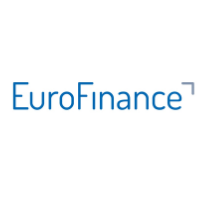RECAP | Cash and Treasury Management Event Copenhagen | By Pieter de Kiewit
06-09-2022 | cashandtreasury.dk | treasuryXL | Pieter de Kiewit | LinkedIn
Last week, Pieter de Kiewit was Chairman of the Cash & Treasury Management Conference in Copenhagen. Pieter decided to take the effort to share his experience with you.

By Pieter de Kiewit, Chairman of the event
Corporate treasury events come in many shapes and sizes. Earlier this year, I reported on my visit to Mannheim, in a few weeks you can expect a blog about Vienna, in this blog more about Copenhagen. I can already tell you that I liked the format and set-up of this event.
Corporate treasury markets will always be very niche. The event organiser, Insight Events, targeted a mainly Danish-Scandinavian audience. The sessions were all in English and the venue was the beautiful Hotel D’Angleterre in the heart of Copenhagen. It was also a conscious choice to keep the audience small, just under 150 and of high calibre: almost all treasurers, most of them quite senior and well informed. The consequence of this choice is also that there were no parallel sessions, all sessions were attended by the entire audience. During the break one could meet the various treasury service and product providers, including treasuryXL partner Nomentia.
Last year, I was asked to present on “how to get hired for your next treasury position” and had some questions during other sessions. Based on the bond we built, I was asked to be moderator/chairman of this year’s event. I thought it was a great gig, if it was appreciated, you just have to ask others.

The programme consisted of presentations and panel discussions led by Nordea. I was impressed by the level of quality offered. There were two macro-economic presentations, one by the Chief Economist of Nordea, a well-known TV personality in Denmark and the other by a senior director of EKF, the Danish export credit agency. Both gentlemen brought very thorough interesting insights but, given the current global developments, also a gloomy and dark future.
Another highlight was the input on ESG financing where treasurers and senior sustainability experts together informed the audience about the reality of this type of funding making in, at least for me, an inspiring way. In a cleverly constructed format, credit rating and Basel IV developments were linked in a session with the most questions from the audience.
In other, more traditional but also essential and informative sessions, building treasury teams, mergers and career development were on the agenda. And the non-treasury topic was brought up in a very entertaining way about a hacked company that does not want to pay a ransom. Relevant not only for treasurers and definitely food for thought.
Looking back, I see a very successful and high quality event. On a personal note, I always enjoy the international in my work. Me as a Dutchman, extrovert, direct and sometimes unintentionally rude, communicating with civilised, reserved Scandinavians who do not ask too many questions hopefully did not result in not being invited for next year. We shall see…..

Thanks for reading!













